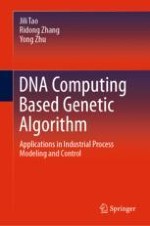2020 | OriginalPaper | Chapter
5. Parameter Identification and Optimization of Chemical Processes
Authors : Jili Tao, Ridong Zhang, Yong Zhu
Published in: DNA Computing Based Genetic Algorithm
Publisher: Springer Singapore
Activate our intelligent search to find suitable subject content or patents.
Select sections of text to find matching patents with Artificial Intelligence. powered by
Select sections of text to find additional relevant content using AI-assisted search. powered by
